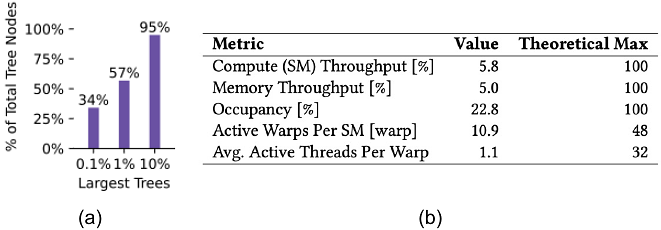Everest: GPU-Accelerated System For Mining Temporal Motifs

Everest: GPU-Accelerated System For Mining Temporal Motifs
Yichao Yuan, Haojie Ye, Sanketh Vedula Wynn Kaza, Nishil Talati
AbstractTemporal motif mining is the task of finding the occurrences of subgraph patterns within a large input temporal graph that obey the specified structural and temporal constraints. Despite its utility in several critical application domains that demand high performance (e.g., detecting fraud in financial transaction graphs), the performance of existing software is limited on commercial hardware platforms, in that it runs for tens of hours. This paper presents Everest - a system that efficiently maps the workload of mining (supports both enumeration and counting) temporal motifs to the highly parallel GPU architecture. In particular, using an input temporal graph and a more expressive user-defined temporal motif query definition compared to prior works, Everest generates an execution plan and runtime primitives that optimize the workload execution by exploiting the high compute throughput of a GPU. Everest generates motif-specific mining code to reduce long-latency memory accesses and frequent thread divergence operations. Everest incorporates novel low-cost runtime mechanisms to enable load balancing to improve GPU hardware utilization. To support large graphs that do not fit on GPU memory, Everest also supports multi-GPU execution by intelligently partitioning the edge list that prevents inter-GPU communication. Everest hides the implementation complexity of presented optimizations away from the targeted system user for better usability. Our evaluation shows that, using proposed optimizations, Everest improves the performance of a baseline GPU implementation by 19x, on average.